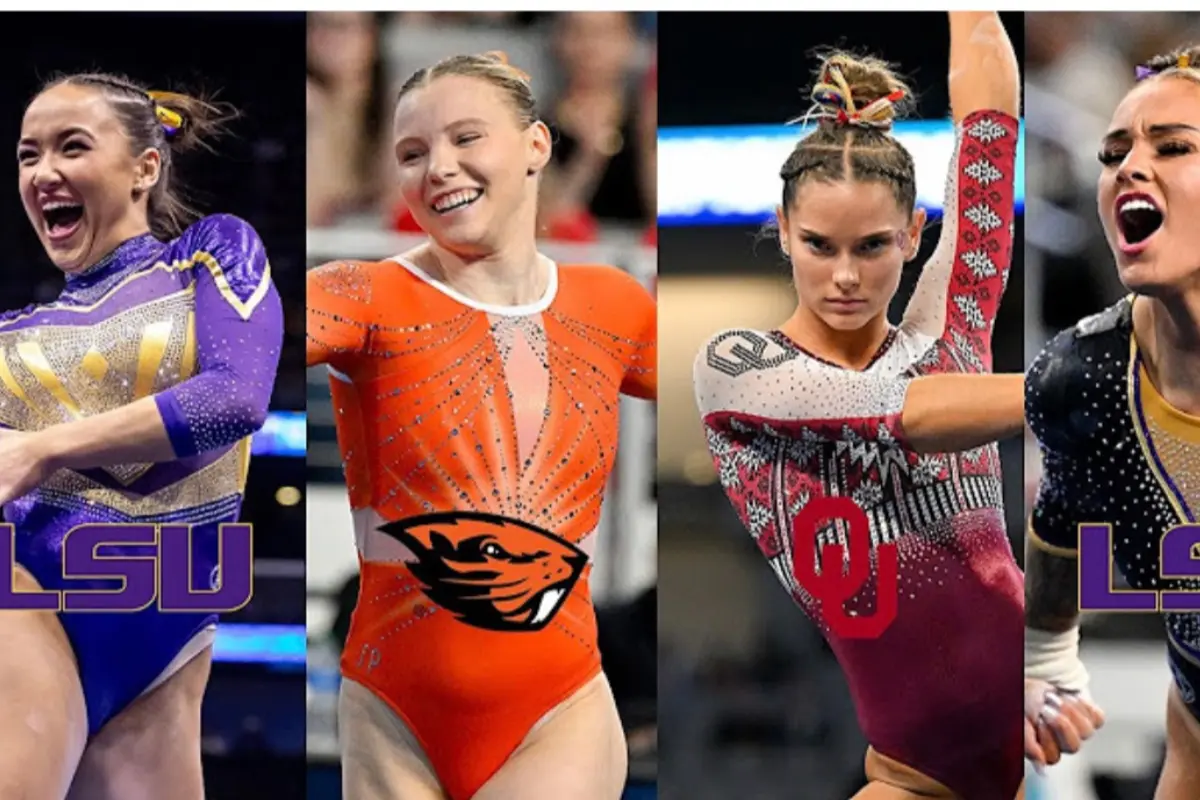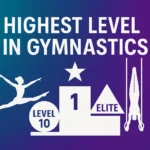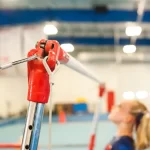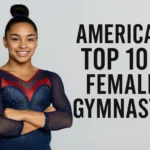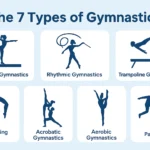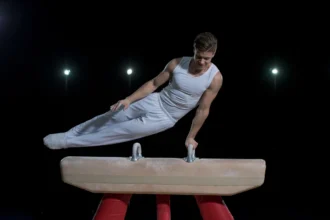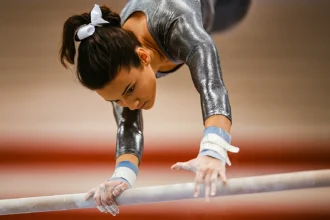For talented gymnasts approaching the top of the Development Program, two exciting paths often come into view:
- Elite gymnastics – The high-performance track aimed at international events like the Olympics and World Championships.
- NCAA gymnastics – The competitive collegiate path focused on teamwork, scholarship opportunities, and balance.
Both are respected, rewarding, and demanding in different ways. Below is a complete breakdown to help families understand the differences—and decide which road may be the better fit.
Elite Gymnastics: The Road to the Olympics
Elite gymnastics is the highest level of competitive gymnastics in the U.S. This path is designed for athletes who aim to compete on the world stage, not just at national meets, but at events like the Olympics and World Championships.
Major Competitions for Elite Gymnasts
- U.S. Championships – Where top elites compete and National Team members are selected.
- Pan American Games – A prestigious multi-sport event involving athletes from the Americas.
- World Championships – A global event that often serves as an Olympic qualifier.
- The Olympic Games – Held every four years, it’s the pinnacle of international gymnastics.
These athletes perform extremely complex routines judged under the FIG Code of Points, which scores both difficulty (D-score) and execution (E-score).
How to Become an Elite Gymnast
ReReaching elite status is a major milestone. Gymnasts must first move through Levels 1–10 of the Development Program, with Level 10 being the final step before elite.
To qualify for elite:
- They must compete in elite qualifiers and pass both compulsory and optional routines.
- They must achieve minimum required scores and demonstrate high physical readiness.
- They often attend national camps for evaluation and ongoing development.
Only the most skilled, disciplined, and consistent gymnasts are able to qualify.
Training Demands
EElite gymnastics requires an enormous time commitment—often equivalent to a full-time job:
- 25–35+ hours per week in the gym, sometimes split into two sessions per day.
- Focus on high-level difficulty, execution, and artistry.
- Frequent travel for camps, qualifiers, and competitions—often nationwide or international.
- Year-round training, with very few breaks or off-seasons.
Most elites begin this demanding lifestyle between ages 7 and 10. Junior elites compete from ages 11–15, while senior elites (16+) are eligible for major international meets.
In summary, Elite gymnastics isn’t for everyone. But for those who thrive under pressure and love the grind, it offers a rare opportunity to compete with the best in the world.
NCAA Gymnastics: The College Experience
NCAA gymnastics is college-level competition in the U.S., overseen by the National Collegiate Athletic Association. It features teams from universities across the country—mostly in Division I, but also in Divisions II and III.
In NCAA women’s gymnastics (WAG), gymnasts compete in the same four events as in elite:
- Vault
- Uneven Bars
- Balance Beam
- Floor Exercise
However, routines are designed to emphasize clean execution, consistency, and team-based performance over maximum difficulty.
The Student-Athlete Lifestyle
NCAA gymnasts are full-time students. They attend classes, live on campus, and have access to academic support systems. The structure encourages a healthy balance between sport and life.
Key features of NCAA gymnastics:
- Team scoring – Every routine counts toward the team total.
- Capped training hours – NCAA limits training to 20 hours/week during season.
- Structured season – Runs from January to April, with an off-season for rest and preparation.
- Academic resources – Student-athletes get tutoring, advising, and career planning help.
Many gymnasts say college reignites their love for gymnastics. It’s often described as a joyful, supportive, and exciting environment—especially after the intense pace of elite training.
The Energy and Excitement
NCAA meets are lively, crowd-friendly, and full of team spirit. Compared to the quiet, focused tone of elite meets, NCAA events feel more like a celebration.
- Perfect 10s are common and cheered loudly.
- Teammates cheer, dance, and hug after routines.
- School pride adds energy—fans fill arenas to support their teams.
Olympians like Trinity Thomas (Florida) and Jordan Chiles (UCLA) have helped grow NCAA gymnastics by combining elite-level skill with college charisma.
Scoring and Routine Strategy
In NCAA, gymnasts usually perform shorter routines that are strategically crafted to start from a perfect 10.0, maximizing clean execution rather than pushing high difficulty. For example, a gymnast may remove a risky skill if it helps avoid deductions and secure a higher score overall.
Key Differences at a Glance
| Feature | Elite Gymnastics | NCAA Gymnastics |
|---|---|---|
| Primary Goal | Olympic & World competition | Team success, college titles |
| Training Hours | 30–40+ hrs/week | Max 20 hrs/week (NCAA rule) |
| Scoring System | FIG open-ended (D + E score) | Modified 10.0 system |
| Routine Focus | Maximize difficulty and artistry | Emphasize execution and consistency |
| Lifestyle | High-intensity, sport-centered | Balanced with academics and social life |
| Career Span | Often ends in teens or early 20s | Can continue all 4 years of college |
| Burnout Risk | Higher due to demands | Lower, more sustainable |
Why the NCAA Path Is Growing More Popular
NCAA gymnastics is booming—for both athletes and fans. Once seen as a post-elite option, it’s now a primary goal for many gymnasts. Here’s why:
1. A More Balanced Lifestyle
College gymnastics allows time for academics, friendships, and rest. With a capped 20-hour training week, gymnasts can enjoy life outside the gym while still competing at a high level.
2. Team Culture and Support
In NCAA, it’s not just about the individual. Teammates cheer loudly, celebrate together, and form strong bonds. This team-first culture helps gymnasts thrive emotionally and socially.
3. Scholarship and NIL Opportunities
College athletes can earn athletic scholarships that help cover education. With new NIL (Name, Image, Likeness) rules, gymnasts can also earn money from brand deals, social media, and appearances.
Famous examples include:
- Livvy Dunne (LSU)
- Sunisa Lee (Auburn)
Both have used NCAA gymnastics to build their personal brands.
4. More Visibility Than Ever
NCAA gymnastics is booming in the media. Thanks to better coverage on networks like ESPN, more streaming options, and increased social media content, college gymnasts are now household names.
- Record-breaking attendance at live meets
- Viral floor routines on TikTok and YouTube
- National championships broadcast to millions of viewers
This increased visibility not only inspires young gymnasts, it shows that you don’t have to go to the Olympics to become a star.
5. Not Just for Retired Elites Anymore
Historically, NCAA gymnastics was viewed as a post-elite option. Today, many gymnasts skip elite altogether and train specifically for NCAA:
- Club coaches tailor plans toward college readiness
- Families see it as a realistic, fulfilling long-term path
- NCAA allows four full years of high-level competition, which elite can’t always guarantee
With more recruiting opportunities and a clear path from club to college, the NCAA route is becoming the first choice, not the fallback.
For Parents & Gymnasts: What to Consider
- Discuss goals: Ask your child what they love most—competition, college life, team culture?
- Check their passion & resilience: Are they excited about training without burnout?
- Review academics: Can they meet NCAA standards and balance school?
- Evaluate gym culture: Does it nurture their growth, health, and happiness?
- Stay flexible: Paths can change—elite to NCAA or vice versa. Periodically reassess.
Whichever route you choose, prioritize your gymnast’s joy, well-being, and long-term growth.
